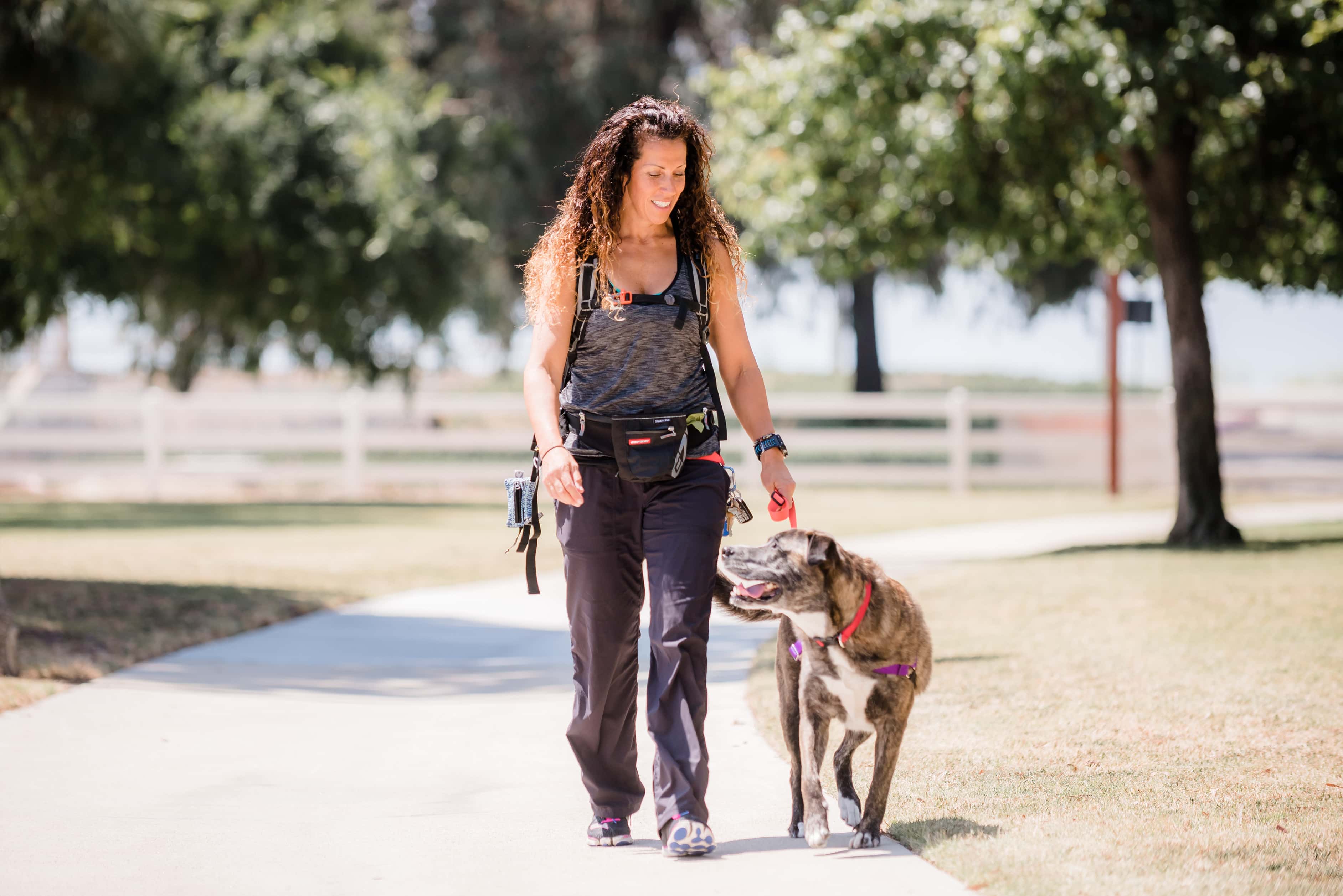Train Your Dog Like a Pro: Easy Steps to Success

Setting Training Goals for Your Dog
Setting Realistic and Specific Training Goals for Your Dog
When setting training goals for your dog, it's essential to be realistic and specific. By determining what behaviours or commands you want your dog to learn, you can create a clear roadmap for training. Instead of aiming for broad goals like "be perfect," focus on tangible actions such as "sit on command" or "walk politely on a leash." Setting specific goals will help you track your progress and celebrate small victories along the way.
Importance of Consistency in Training Your Dog
Consistency is key when it comes to training your dog. By sticking to a regular training schedule and using the same cues and rewards each time, you'll help your dog understand what is expected of them. Dogs thrive on routine, so consistent training will create a sense of security and confidence in your furry friend.
Remember, Rome wasn't built in a day, and neither is a well-trained dog. With patience and perseverance, you'll be amazed at the progress you and your pup can make together.

Positive Reinforcement Training Methods
Benefits of Positive Reinforcement Training for Dogs
As a responsible dog owner, it's crucial to understand your furry friend's behaviour and how they communicate. Dogs have their way of expressing themselves through body language, vocalizations, and actions.
By learning to decode these signals, you can better respond to your dog's needs and strengthen the bond between you. Pay attention to cues like tail wagging, ear positioning, and barking to get a deeper insight into what your dog is feeling or trying to convey.
Implementing Rewards and Encouragement in Dog Training
Recognizing and addressing behaviour issues early on can prevent bigger problems down the line. It's important to tackle these issues with patience and understanding, whether it's excessive barking, aggression, or separation anxiety. Consulting a professional trainer or behaviourist can provide valuable insights and strategies to modify your dog's behaviour positively.
Remember, every dog is unique, and what works for one may not work for another, so tailor your approach to suit your dog's individual needs.

Training Essentials: Obedience Commands
Teaching Basic Obedience Commands to Your Dog
Building a strong foundation for a happy and well-adjusted dog starts with teaching them basic obedience commands. These commands serve as a communication bridge between you and your furry friend, allowing you to guide their behaviour, ensure their safety, and strengthen your bond.
However, before diving into command training, it's essential to understand your dog's natural way of communicating. Unlike humans, who rely primarily on spoken words, dogs express themselves through a rich tapestry of body language, vocalizations, and actions. Their wagging tails, ear positions, facial expressions, playful nips, and barking all hold important clues to their emotional state and needs.
By becoming fluent in "dog speak," you can unlock a deeper level of understanding. Learning to decode these subtle signals allows you to respond effectively to their requests for walks, playtime, or simply a reassuring pat. It also helps you identify signs of discomfort, fear, or anxiety, enabling you to address underlying issues promptly and create a safe and secure environment for your dog.
This newfound understanding becomes the cornerstone for successful obedience training. Once you can effectively communicate with your dog, teaching them basic commands like "sit," "stay," "come," and "heel" becomes a rewarding and enjoyable experience for both of you. These commands provide a framework for managing your dog's behaviour in various situations, from walks at the park to greeting guests at the door. Mastering these essential commands promotes safety, prevents unwanted behaviour, and allows you to navigate the world with your canine companion confidently.
Remember, training should always be a positive experience. Utilizing rewards, praise, and patience will keep your dog engaged and motivated to learn. As you progress through the training journey, you'll witness a remarkable transformation in your dog's behaviour and a deepening of the bond you share.

Leash Training and Walking Etiquette
Proper Leash Training Techniques for Dogs
As a responsible dog owner, it's important to establish good leash walking habits from the start. Begin by introducing your dog to their collar or harness in a positive way, rewarding them for wearing it calmly. Practice walking on a leash in a controlled environment to help your dog get used to the sensation and the idea of walking beside you.
Use treats and praise to reinforce good behaviour, such as walking without pulling or responding to cues to stop or change direction. Consistency and patience are key to helping your dog master leash-walking skills.
Promoting Good Behavior During Walks
When walking your dog, focus on creating a positive and enjoyable experience for both of you. Keep the leash loose and allow your dog some freedom to explore their surroundings while staying connected to you. Use verbal cues and gentle corrections to guide your dog back on track if they starts to pull or become overly excited.
Remember to reward good behaviour with treats, praise, or extra playtime to reinforce positive habits. Regular walks provide mental stimulation and physical exercise, contributing to your dog's overall well-being and strengthening your bond.

Crate Training and Housebreaking
Effective Crate Training Tips for Your Dog
As a dedicated dog owner, embracing crate training can be a positive experience for both you and your furry companion. Start by introducing the crate as a cosy and inviting space, encouraging your dog to explore it on their terms. Use treats, toys, and soft bedding to create a welcoming environment, making the crate a safe haven for rest and relaxation.
Gradually increase the time your dog spends in the crate, always rewarding calm behaviour and never using the crate as a form of punishment. Consistency, patience, and positive reinforcement are key to successful crate training.
Housebreaking Strategies for Puppies and Adult Dogs
When it comes to housebreaking, staying optimistic and consistent is crucial for a successful training experience. Establish a routine that includes regular potty breaks, meal times, and play sessions to help your dog understand when and where it's appropriate to relieve themselves. Watch for signs that your dog needs to go outside, such as sniffing or circling, and promptly take them to their designated potty area.
Praise and reward your dog for going potty in the right spot, reinforcing good habits and encouraging them to continue. With patience and a positive attitude, housebreaking can be a rewarding process that strengthens the bond between you and your canine companion.

Socialization and Interaction Skills
Importance of Socialization for Dogs
As a dedicated dog owner, embracing socialization is crucial for your furry companion's overall well-being and development. By exposing your dog to various environments, people, and other animals, you can help them become confident, well-adjusted, and friendly pets. Socialization also plays a key role in preventing behavioural issues such as fear and aggression.
Start socializing your dog at a young age and continue to provide positive experiences throughout their life, allowing them to feel comfortable and secure in different situations. Remember, a well-socialized dog is a happy and balanced dog!
Developing Positive Interaction Skills
When it comes to developing positive interaction skills, patience and consistency are key. Encourage your dog to greet new people and animals in a calm and friendly manner, rewarding good behaviour with praise and treats. Teach them how to interact politely by practising basic commands such as "sit" and "stay" in various settings. Monitor their body language and reactions during interactions, stepping in to redirect any undesirable behaviour.
By providing opportunities for positive social interactions, you can help your dog build confidence, improve their communication skills, and strengthen their bond with you as their trusted companion. Remember, every interaction is a chance to learn and grow together!

